Gregory A. Fournier's Blog, page 41
November 9, 2013
"A Crime to Remember" - Investigation Discovery Channel's New True Crime Show Debuts Tuesday, November 12, 2013
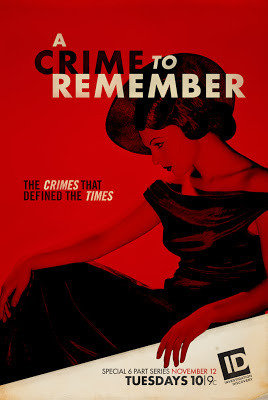 A Crime to Remember debuts Tuesday night on Investigation Discovery at 10 PM Eastern/7 PM Pacific time. Check your local listings for channels in your area and set your DVRs to record the entire series.
A Crime to Remember debuts Tuesday night on Investigation Discovery at 10 PM Eastern/7 PM Pacific time. Check your local listings for channels in your area and set your DVRs to record the entire series.Episode number five, "A New Kind of Monster" will air on Tuesday, December 10th, 2013. It will deal with the Washtenaw County Coed Murders of 1967-1969, the subject of the true crime book I'm close to completing called The Rainy Day Murders.
The six-part limited series premieres:
Tuesday, NOVEMBER 12 at 10PM/9PM on ID.
Watch the NEW and GORGEOUS series promo: https://vimeo.com/78664854
Or you can find it here:
https://www.youtube.com/watch?v=fZaCOomqaMA
Crime never looked so classy.
Link to it, tweet it, share it, post it - whatever you like!

For a review of the series and a summary of each episode, click on this link: http://www.thefutoncritic.com/news/2013/11/06/investigation-discovery-revisits-the-good-old-days-gone-bad-with-a-crime-to-remember-683204/20131106id01/
Published on November 09, 2013 10:20
November 5, 2013
Investigative Discovery Channel's New Series Debuts - A CRIME TO REMEMBER - on Tuesday, November 12th, 2013
 "Michigan Coed Murders"
"Michigan Coed Murders"In February, I flew out to New York to do a segment on a new series XCON Productions was doing for the Investigation Discovery Channel called A CRIME TO REMEMBER. The series recounts six cases that have fallen through the cracks of time or which are generally unknown to the public at large.
XCON's fifth show of the series covers the "Michigan Coed Murders," which occurred in Washtenaw County, Michigan, in 1967-1969. The accused killer of seven young women was convicted of only the last, Karen Sue Beineman. The program will surely focus on that part of the story to stay within their forty-two minute time constraint.
In addition to re-enactments, several people involved with these cases were interviewed: former Washtenaw County Sheriff, Douglas Harvey; forensic psychologist, Dr. Katherine Ramsland, Ph.D; former Eastern Michigan University campus policeman, Larry Mathewson; and others will provide commentary on these matters. The real names of the victims are used in this new production, as well as vintage photographs from the era.
Be sure to view the sneak preview of the first episode of the series below in the XCON announcement of the season opener.
I am very pleased with the production values I see and look forward to the Washtenaw County episode on Tuesday, December 10th, at 10:00 PM Eastern Time/7:00 PM Pacific Time.
Set your DVR to record the entire series, as scheduling may be subject to change.

Greetings from XCON Productions,
We are happy to announce the premiere of A CRIME TO REMEMBER (formerly titled The Bad Old Days) on Investigation Discovery, Tuesday Nov 12th at 10pm.
The episode order is always subject to last-minute network changes (so check your local listings!) but looks like this right now:
The Alice Crimmins Case -11/12/13The Career Girl Murders - 11/19/13The Chillingworth Murders - 11/26/13 United 629 - 12/3/13The Michigan Coed Murders - 12/10/13The Ann and Billy Woodward Story - 12/17/13
And here's a link to the network promo: http://investigation.discovery.com/tv-shows/a-crime-to-remember/a-crime-to-remember-videos/a-crime-to-remember.htm
Once again, thank you very much Greg for your time and generosity throughout the process. We couldn't have done it without you. As I'm sure you're aware (since you're now a seasoned TV pro!), 42 minutes is nowhere near enough time to tell these stories in the degree of detail that you have provided or that we would like. So please forgive us for truncating in certain places and expanding in others...television is a strange creature, with particular demands. We hope you understand.
We are very proud of the series and hope you like the shows.
Thank you again for your participation!
All the best, The XCON team
Published on November 05, 2013 00:00
October 29, 2013
Facing Down John Norman Collins - Kristi Kurtz
 The tale I'm about to tell really happened. It took over a year for me to contextualize the incident that occurred one Sunday evening to me and my then girl friend, Kristi Kurtz, as we were walking to our apartment after visiting friends.
The tale I'm about to tell really happened. It took over a year for me to contextualize the incident that occurred one Sunday evening to me and my then girl friend, Kristi Kurtz, as we were walking to our apartment after visiting friends.We stopped at the party (convenience) store on the corner of W. Cross St. and Ballard St, just off of Eastern Michigan University's campus. We bought a small bag of groceries, walked up the street a block, and turned right on Emmet St. heading for College Place where we shared an apartment.
This neighborhood was over a hundred years old and the old growth trees that lined the street provided a natural canopy of added darkness. As Kristi and I casually walked up the street, a car pulled along side us. It was a muggy July evening, and the windows were rolled down revealing three males in the car.
The driver addressed Kristi first saying, "Hey, baby. Want to go out with some real men?" My response was, "Hey, man. She's with me." The next thing I heard was, "Shut the fuck up asshole or the three of us will get out and kick the shit out of you."
Before I could respond, Kristi was impugning their manhood. "What a bunch of dickless wonders!" she scolded the driver. "Three against one, you cowardly faggots." Did I mention that Kristi didn't take crap from anyone and had a mouth on her?
I figured that it might be time for us to drop our groceries and sprint home, but something unexpected happened. Kristi's defiant response seemed to perplex the driver, then out of frustration, he punched the gas pedal and left us in a cloud of screeching tires and stinking exhaust. That was about fifteen or twenty minutes after ten o'clock on the evening of July 30th, 1968.
Although I thought this was an isolated incident, one day I was reading an article about the series of unsolved murders in the Ypsilanti area and focused on the second murder victim, Joan Schell. Suddenly, I was able to connect the dots. Joan had been hitchhiking and had taken a ride with three guys in a black and red, unidentified car less than an hour after Kristi and I had been approached.
A year after John Norman Collins was arrested for the abduction and sex-slaying of Karen Sue Beinemen, Collins ex-housemate, Arnie Davis, testified in open court that he was in the black and red car with Collins that night when they picked up Joan Schell. Then Collins and Schell left him and a third person to cruise around town because John said he would drive Joan to Ann Arbor in his car. After that fateful ride, Miss Schell was never seen alive again.
In yet another cruel twist of fate, Kristi Kurtz (41) was found murdered in 1990 during a bungled burglary attempt at her horse farm in Whitmore Lake. More on that story in my next post.
Published on October 29, 2013 06:42
October 19, 2013
Treading on the Grief of Others in the John Norman Collins Case

It is not easy writing about terrible matters which stir up painful memories and open old wounds. So it is with the Rainy Day Murder cases in Washtenaw County that occurred between the summer of 1967 and the summer of 1969.
If these deaths were matters of private grief, interest would be limited to the family and friends of the deceased, but a lone murderer bent on venting his rage against defenseless young women held two college campuses hostage during his two year reign of terror.
Coeds at The University of Michigan and Eastern Michigan University felt threatened by chronic fear. Parents whose hopes and dreams rested upon the fragile shoulders of their daughters lived in dread of getting a knock on the door from plainclothes policemen with the news that their daughter was the latest victim of the phantom killer.
When a sixteen year old Romulus, Michigan, girl and a local Ypsilanti thirteen year old junior high school student were found murdered only twenty-two days apart, the entire city of Ypsilanti went into panic mode.
The murderer was no longer killing only college girls - every young woman in town was now a potential victim of this at-large killer, and police were no closer to making an arrest than they had been with the murder of the first victim almost two years before.
Only two of the eight families of victims ever had their day in court - the Beinemans in 1970 and the Mixers in 2005. After forty-five years, most of the parents of the victims have gone to their graves never to see justice done on their daughter's killer.
It is a persistent wound carried by the brothers, sisters, cousins, and friends of the victims. But generations further removed from those times want to know the facts about what happened to their relatives and the man accused of killing them.
Comments on John Norman Collins websites show a remarkable amount of misinformation about these cases. Some people have elevated Collins to the status of a folk hero who was falsely imprisoned for the deeds of another, then scapegoated and railroaded by Washtenaw County law enforcement officials anxious to prosecute this case. When the actual details and facts of these murders are generally known, it is my hope that such people will disabuse themselves of those notions.
Many young people in Ypsilanti and Ann Arbor would like to know more about their history and discover what their grandparents and parents never knew, the full evidence as it exists in the unsolved murders of these six young women.
A debt to history must be paid. The facts of these cases need to be documented and preserved for posterity, so time doesn't swallow up the memory of these young women whose fatal error was not recognizing danger before it was too late.
Soon, the living history of people with knowledge of these cases will be lost. If you can shed some light on these tragedies, now is the time to come forward. You can contact me confidentially at:
gregoryafournier@gmail.com
Published on October 19, 2013 06:31
October 15, 2013
The John Norman Collins Mess and My Motivation For Writing About It
 A small number of people have questioned my motives for writing The Rainy Day Murders about John Norman Collins. Why reopen old wounds?
A small number of people have questioned my motives for writing The Rainy Day Murders about John Norman Collins. Why reopen old wounds?The sex slaying murders of seven and possibly more local young women created an atmosphere of sustained panic and mortal fear for college coeds on two college campuses, Eastern Michigan University in Ypsilanti and The University of Michigan in Ann Arbor.
***
This tragedy left an indelible impression on me and anyone else who lived through that terrible period of Washtenaw County history. I first realized an arrest had been made in the "Coed Killer Case" when I was walking down from my apartment on College Place St. to have lunch at Roy's Grill, a diner on the corner of W. Cross and College Place. It was Friday, August 1, 1969, around 10:30 or so in the morning.
I lived only a block down the street and saw an assortment of four or five police cars surrounding the corner house on Emmet St. A small group of people had gathered across the street from the house; the police were keeping spectators away.
My first thought was that another girl's body had been found. A year before, Joan Schell, the second victim of a phantom local killer, had lived across the street from this very same Emmet St. house. Her body was found in farm country on the northern outskirts of Ann Arbor.
I approached someone I knew and asked him what was happening, "John Collins was arrested for the murder of that Beineman girl a week ago," he told me.
My friend had occasionally ridden motorcycles through the countryside with Collins, and now and then they "exchanged" motorcycle parts, so he knew him. When I asked how he got his information, he pointed to a guy in front of the cordoned off house who was arguing with policemen.
Arnie Davis lived across the landing from Collins on the second floor and described himself, during the court case a year later, as Collins' "best friend." Davis wanted to get his stuff out of the house, but it had already been locked down as a potential crime scene.
I walked a scant block further to W. Cross St. and ate lunch at Roy's Grill. When I walked up the street to go home, the crowd had grown and the media had arrived by this time. I have a vivid memory of reporters questioning bystanders.
When I saw Collins' picture in the newspaper later that evening, I was able to place the name with the face. I realized that I had several negative brushes with this guy while I was a student at Eastern Michigan.
He tried to clothesline me once when I passed by him. Perhaps he was displeased with me because I witnessed him and his friend Manny attempt to break into a car on my street, College Place.
As I was about to walk past him, I ducked and swung around in a defensive position, but Collins and Manny continued down walking down the street like nothing had happened. They headed towards the Emmet St. boarding house where they each rented rooms.
After learning of Collins' arrest, my mother called me on the phone relieved. She reluctantly told me that she had suspected I might be the murderer because I resembled the eyewitness descriptions in the newspapers. Can you believe that? Thanks, Mom.
***
When The Michigan Murders came out in 1976, I snapped it up like so many other people in Ypsilanti and anxiously read it. I was disappointed because I felt the novelization of the story took liberties with the facts and relied too heavily on official reports and the work of an Eastern Michigan University English Professor, Dr. Paul McGlynn. He had allowed Edward Keyes to use his notes which McGlynn had gathered while attending the court proceedings doing research for his own book.
I soon discovered that many assumptions and liberties were taken with the story which made for smooth flowing fiction, but the real story is anything but smooth flowing. It is a ragged mess of complicated misinformation, shaky news reporting, and missing documentation. If this was an easy story to tell, it would have been done long ago.
The most frustrating and confusing aspect of Edward Keyes' novelization was that he chose to change the names of the victims and their alleged murderer. When another author took up the charge of this case some years later, he too changed the names of the victims and of the accused, and then referenced those names to the fictitious names which only compounded the confusion and led to the obscurity of the real victims.
Over forty-five years have passed since these sad events, and it is time for the record to be restored and updated. It may have been customary in the past for authors to change the names of victims to protect the families and their feelings, but those days are long gone. I would rather get the facts right than be polite.
Published on October 15, 2013 04:23
October 11, 2013
Aurora Borealis Lights Up Michigan Skies
 Near Marquette, Michigan, on October 9, 2013When I was twenty-one, I went camping in the northwoods on a granite outcropping that towered above the pine, birch, and cedar trees. It was about five miles west of Marquette in Michigan's Upper Peninsula.
Near Marquette, Michigan, on October 9, 2013When I was twenty-one, I went camping in the northwoods on a granite outcropping that towered above the pine, birch, and cedar trees. It was about five miles west of Marquette in Michigan's Upper Peninsula. As night fell, the cosmic light show began. I can attest that it was much better than anything I had ever seen in the heyday of Detroit's Rock Mecca, The Grande Ballroom.
The night sky inspired me to write a poem. That was forty-four years ago, and I haven't seen the Northern Lights or the poem since.
But as luck would have it, I found a wonderful photograph taken recently on October 9th, 2013, by Ryan Stephens that captures a glimpse of how beautiful the heavens were that night so long ago.
Todd and Brad Reed Photography, took a photograph of the same event from Ludington, Michigan, in the Lower Peninsula for a different perspective.
 Same event from Ludington, Michigan
Same event from Ludington, MichiganBy the way, I found the poem I wrote so many moons ago. I'm awash with good memories of great times with old friends.
Northern Lights
Near Marquette,encircled by woodwindeddark moans and whistling howls,lies a Sanctuary of Stone.
Above noise, above trees,this towering mound is dwarfedby a panormaof star strewn sky
shooting waves of promenading luminary reflections,streaking and undulating,a spectacle of the heavens
stroked with hues ofincarnadine, emerald, and canary.The only show -the only sounds around.
Published on October 11, 2013 08:32
October 3, 2013
Polish Village Cafe in Hamtramck, Michigan

No trip to Detroit is complete for me without eating some of the city's famous cuisine. Sure, White Castle and Coney Island dogs are local delicacies, but for my money, there is no place better than the Polish Village Cafe to get a real taste of ethnic European Detroit.
 "A Taste of Poland" (Polish Plate)Located in Hamtramck, a city within the city limits of Detroit, the restaurant is easy to access from the Interstate. The neighborhood is in good repair and reminds me of when I grew up in the Oakwood area of Detroit in the early 1950s. The business section appears lively and active.
"A Taste of Poland" (Polish Plate)Located in Hamtramck, a city within the city limits of Detroit, the restaurant is easy to access from the Interstate. The neighborhood is in good repair and reminds me of when I grew up in the Oakwood area of Detroit in the early 1950s. The business section appears lively and active. As great as the kielbasa, golabki (stuffed cabbage), pierogi, and nalesniki (crepes) were, something else caught my palate, a dark Polish beer named Zywiec [je-vi-ets] Porter. It is surprisingly smooth with a 9.5% alcohol content that complements the ethnic delights this restaurant has to offer.
As great as the kielbasa, golabki (stuffed cabbage), pierogi, and nalesniki (crepes) were, something else caught my palate, a dark Polish beer named Zywiec [je-vi-ets] Porter. It is surprisingly smooth with a 9.5% alcohol content that complements the ethnic delights this restaurant has to offer.To learn more about The Polish Village Cafe, watch this short video: http://www.youtube.com/watch?v=GZX5-JfCYeg
Also, enjoy this fantastic animation of Poland's history: http://www.youtube.com/watch?v=2DrXgj1NwN8
Published on October 03, 2013 03:58
September 28, 2013
Psychic Peter Hurkos Explains his Gift
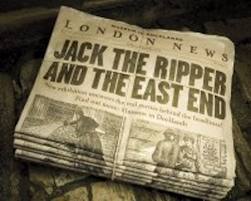 When a serial killer has been at large in a community for an extended period of time, the public loses faith in local law enforcement and begins to look for its deliverance from other quarters.
When a serial killer has been at large in a community for an extended period of time, the public loses faith in local law enforcement and begins to look for its deliverance from other quarters.The first manifestations of this are usually prayer vigils and crusades calling on divine intervention. If the killer continues to slaughter victims and eludes police long enough, calls for supernatural assistance inevitably arise.
The Jack the Ripper case is the most famous serial killer case in history, but by no means the first or the worst. In the Whitechapel area of London's East End, five women were butchered and left in streets and alleyways, and one was viciously mutilated in her bed. Then, the Ripper vanished into history.
Noted British spiritualist, medium, preacher, and Fleet Street journalist, Robert James Lees believed he saw visions of Jack the Ripper and went to police with that information. Scotland Yard turned him away thinking he was on a lunatic fringe. For a short while, Lees was himself a suspect in the Ripper case.
Sooner or later, psychics turn up in virtually every serial killer case. The first person to bill himself as a "police psychic" was Dutchman Pieter van der Hurk, known in America as Peter Hurkos.
When the Stone of Scone was stolen from Westminster Abbey in 1950, legend has it that Hurkos told police that the Scottish relic was stolen as a prank but would soon be found. Just over a week's time later, the Stone was recovered. The French press had a field day with the story.
Hurkos received international press coverage, which made him an instant celebrity in Europe. By the end of the decade, he migrated to the United States and developed a supper club act based on his notoriety in solving crimes for police around Europe. Most of his claims were anecdotal and lacked official documentation.
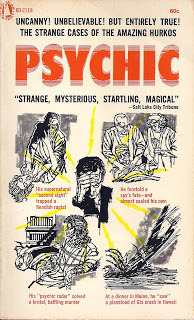 In 1961, Peter Hurkos, with the help of V. John Burggraf, wrote his autobiography simply titled Psychic. He tells of the origin of his gift of "second sight," a fall from a four story building, and he proceeds to give numerous examples of his more notable cases with "extrasensory perception" (ESP).
In 1961, Peter Hurkos, with the help of V. John Burggraf, wrote his autobiography simply titled Psychic. He tells of the origin of his gift of "second sight," a fall from a four story building, and he proceeds to give numerous examples of his more notable cases with "extrasensory perception" (ESP).Hurkos tells his readers early in his story that his strange gift has baffled and astounded scientists and researchers throughout the world. "I am what parapsychologists refer to as a psychic. I am sensitive to people and events that concern them," he purports. Without giving any names or sources, Hurkos claims, "I have been told by scientists that my psychic gift is, so far as they know, the most highly developed in the world."
"I can read vibrations through a phenomenon known as psychometry. Another way to look at it is divining facts through physical contact with an object or its owner. Psychometry is only one of the many facets of my gift of ESP, the famous 'Sixth Sense' of history and legend. I also have the gift of 'precognition'."
Peter Hurkos cites in his book others from history who have had "inner vision." He mentions the prophet Isaiah of The Bible, the prophecies of Nostradamus four hundred years ago, and Edgar Lee Cayce, a famous twentieth-century sensitive. He criticizes Nostradamus for "vague predictions."
"I have never claimed more than eighty-five and one-half percent accuracy in my readings, as established by scientists performing thousands and thousands of tests with me."
Peter Hurkos equates that "emanations from a person or an object do exist, just as heat waves, radio waves, and electric impulses exist." He claims to be sensitive to vibrations from:
an object a person has toucheda piece of clothing the person has worna bed a person has slept inanything a person is associated witheven a photograph of the personHurkos writes that when his powers are very strong, he can hold a telephone line while the phone is in use, and without having heard the conversation, "images leap into my mind like pictures on your television screen."
Peter Hurkos gained national attention in America when he was the subject of a One Step Beyond episode, a television supernatural series in the early Sixties.
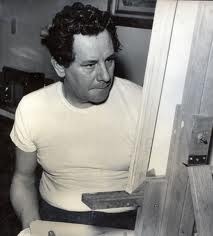 Peter Hurkos in custodyIn 1963, he interjected himself in the Boston Strangler investigation, much to the displeasure of the Boston Police Department. After being arrested for impersonating a police detective and harassing a potential witness, he left the city under duress. Charges would be made and a trial would be held if he didn't leave town immediately.
Peter Hurkos in custodyIn 1963, he interjected himself in the Boston Strangler investigation, much to the displeasure of the Boston Police Department. After being arrested for impersonating a police detective and harassing a potential witness, he left the city under duress. Charges would be made and a trial would be held if he didn't leave town immediately.Nonetheless, Hurkos was portrayed by an actor in the Hollywood film, The Boston Strangler, which did much to rehabilitate his popular reputation.
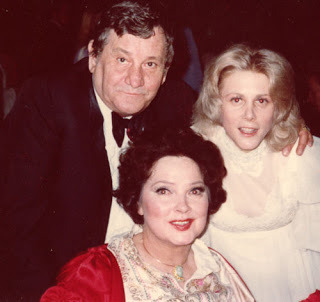 Peter Hurkos, wife Stephany, with actress Kathryn GraysonHe became a regular guest on the television talk show circuit, gave private readings to celebrities and the wealthy, and he continued to perform his Las Vegas and Hollywood nightclub act with his wife/assistant, Stephany, but his bookings waned.
Peter Hurkos, wife Stephany, with actress Kathryn GraysonHe became a regular guest on the television talk show circuit, gave private readings to celebrities and the wealthy, and he continued to perform his Las Vegas and Hollywood nightclub act with his wife/assistant, Stephany, but his bookings waned.In 1969, Hurkos received an unexpected offer from a citizens' group to come to Ann Arbor, Michigan, and help police solve another serial killer case. Six local young women had been sexually assaulted and killed within a two year period, and the police were baffled.
Reluctantly, he agreed. He was hoping he could regain some lost credibility and jump-start his career, if he could only solve these brutal sex-slayings before the killer would strike again.
One Step Beyond episode: The Peter Hurkos Story.
http://www.youtube.com/watch?v=Ei0m__zST_0
Published on September 28, 2013 00:00
September 24, 2013
New John Norman Collins Documentary on Investigative Discovery in December
 The John Norman Collins movie begun in 1976, Now I Lay Me Down To Sleep, was never completed despite rumors to the contrary. As far as anybody knows, no film footage from the original shoot exists. Of course, we are still looking for whatever we can find. Sometime this December, The Investigative Discovery channel will debut a true-crime show called "The Bad Old Days." The network will run an episode on John Norman Collins and the Washtenaw County murders that occurred in Michigan in the late 1960s. In addition to interviews with people familiar with these cases, this episode will include re-enactments of these crimes interspersed throughout the narrative. This show is a fresh look at a case that largely fell through the cracks of time.
The John Norman Collins movie begun in 1976, Now I Lay Me Down To Sleep, was never completed despite rumors to the contrary. As far as anybody knows, no film footage from the original shoot exists. Of course, we are still looking for whatever we can find. Sometime this December, The Investigative Discovery channel will debut a true-crime show called "The Bad Old Days." The network will run an episode on John Norman Collins and the Washtenaw County murders that occurred in Michigan in the late 1960s. In addition to interviews with people familiar with these cases, this episode will include re-enactments of these crimes interspersed throughout the narrative. This show is a fresh look at a case that largely fell through the cracks of time.When I receive the details when it will air, I'll pass the information on. Until then, here are the names of the full cast and crew.
 Executive Producer - Christine ConnorSeries Associate Producer - Rebecca MortonDirector - Jeremiah CrowellAssistant Director (Second Unit) - Paul Jarrett Writer - Bruce BennettCast (in alphabetical order):Nick Adamson - John Norman CollinsArdis Barrow - Joan SchellPatricia Bartlett - Joan GosheDan Berkey - funeral directorDevin Doyle - Dale SchultzErica Hernandez - Mary FleszarJohnny Kinnaird - State Police DetectiveJohn Larkin - Sheriff Douglas HarveyScott Lehman - Corporal David LeikThomas J. Lombardo - Officer MatthewsonKerri Sohn - Karen Sue Beineman
Executive Producer - Christine ConnorSeries Associate Producer - Rebecca MortonDirector - Jeremiah CrowellAssistant Director (Second Unit) - Paul Jarrett Writer - Bruce BennettCast (in alphabetical order):Nick Adamson - John Norman CollinsArdis Barrow - Joan SchellPatricia Bartlett - Joan GosheDan Berkey - funeral directorDevin Doyle - Dale SchultzErica Hernandez - Mary FleszarJohnny Kinnaird - State Police DetectiveJohn Larkin - Sheriff Douglas HarveyScott Lehman - Corporal David LeikThomas J. Lombardo - Officer MatthewsonKerri Sohn - Karen Sue Beineman
Published on September 24, 2013 00:00
September 18, 2013
The John Norman Collins Movie - Part Three of Three
 In 1976, William Martin, (aka: Martin "Marty" Bacow), billed himself as executive producer for a movie based on the Washtenaw County murders of seven young women in 1967-1969 and their accused killer, John Norman Collins.
In 1976, William Martin, (aka: Martin "Marty" Bacow), billed himself as executive producer for a movie based on the Washtenaw County murders of seven young women in 1967-1969 and their accused killer, John Norman Collins. He reported in an Ypsilanti Press article dated October 13th, that he had completed the script seven months before. The movie was slated to be called Now I Lay Me Down To Sleep, named after the children's bedtime prayer. "The filming should start sometime after the new year," Martin said.
William Martin, known as Marty, hired a New York film director (who wishes not to be identified) to assemble a film crew and come to Ypsilanti/Ann Arbor to shoot a low budget film.
This Director of Photography (DP) says he and his crew drove two film trucks to Ann Arbor only to find that "Marty had no script, just a sketchy outline and nothing else. He had no cast, no locations, and he had only partial financing for the project." William Martin was confident that publicity would attract investors and additional funding, the life blood of the movie industry.
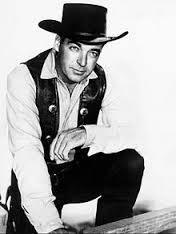 Rory Calhoun in "The Texan"
Rory Calhoun in "The Texan"William Martin (executive producer) named local attorney Jay Kaufman to be the producer. It was his job to raise the money. Somehow, Martin was able to land Hollywood actors Rory Calhoun, to play a Michigan Sate Police post commander, and Kathryn Grayson of Hollywood musical fame, to play John
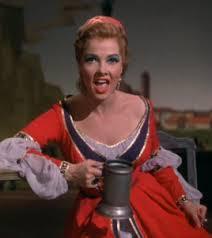 Kathryn Grayson in "Kiss Me Kate"Norman Collins' aunt, Sandra Leik. These actors were represented by the same booking agent, who it was thought, owed Marty a favor.
Kathryn Grayson in "Kiss Me Kate"Norman Collins' aunt, Sandra Leik. These actors were represented by the same booking agent, who it was thought, owed Marty a favor. Psychic Peter Hurkos was hired to play himself and Bill Bonds, a local Detroit television newscaster, was also hired to play himself. Other roles would be cast by locals as they went along.
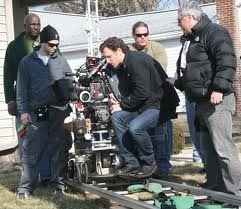 The DP said they shot footage for four or five weeks. On a typical day, there would be no casting and no preset location. "Marty rode around in a Cadillac convertible and literally acquired a cast and locations along the way. We were shooting cinema verite."
The DP said they shot footage for four or five weeks. On a typical day, there would be no casting and no preset location. "Marty rode around in a Cadillac convertible and literally acquired a cast and locations along the way. We were shooting cinema verite." "For example, we went to the Michigan State Police headquarters and suddenly real state policemen were playing troopers in the movie, and we were shooting scenes in and around the police post."
Towards the end of the exterior and location shooting, Martin Bacow (aka: William Martin) was being questioned by Federal authorities about the disappearance of Teamster boss Jimmy Hoffa and where his body might be buried. Because of the controversy, word came down that the studio pulled the plug on the project.
The film crew was left high and dry. This was the weirdest film shoot any of them had ever been on, and they speculated that the film may have been a scheme to raise money and defraud investors.
William Martin produced several low budget movies over his career. One of them, Jacktown, is about a Jackson Prison inmate who tries to go straight in Royal Oak, Michigan. A short viewing of this film will convince anyone that William Martin (Martin Bacow) was no filmmaker.
When I wrote and contacted Paramount Pictures in Hollywood, I was told that they had no knowledge of Now I Lay Me Down To Sleep. Their archivist checked their records and film vault and found no evidence of any film rushes or publicity stills from the movie. They had no record or association with the film.
Further research on Martin "Marty" Bacow (aka: William Martin), discovered in a book entitled The Last Mogul by Dennis McDougal, revealed "Martin Bacow, a Hollywood jack of all trades, began his career in Southern California in 1948 as a boxing announcer, who then branched out over the next four decades to become an actor, screenwriter, labor negotiator, and a B movie producer."
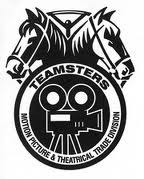 A close associate of Teamster President Jackie Presser, Bacow was known as the Teamster's man in Hollywood. It was rumored he could start and settle labor disputes in Tinsel Town.
A close associate of Teamster President Jackie Presser, Bacow was known as the Teamster's man in Hollywood. It was rumored he could start and settle labor disputes in Tinsel Town. The DP recollected that during the filming in Ann Arbor that "Marty was always seen in the presence of two Teamster consultants, William 'Candy' Davidson and Marvin 'The Steel Broker' Mulligan, who acted as Martin's private security."
Lost JNC Movie post - part one: http://fornology.blogspot.com/2012/05/the-lost-john-norman-collins-movie-part.html
Lost JNC Movie post - part two: http://fornology.blogspot.com/2013/09/the-lost-john-norman-collins-movie-part.html
Published on September 18, 2013 00:00



